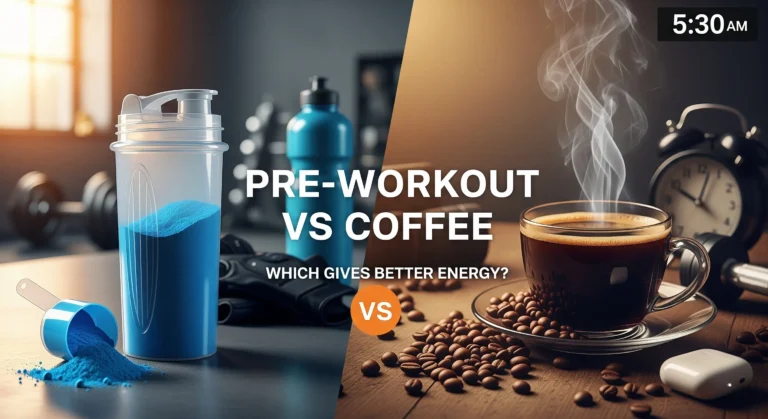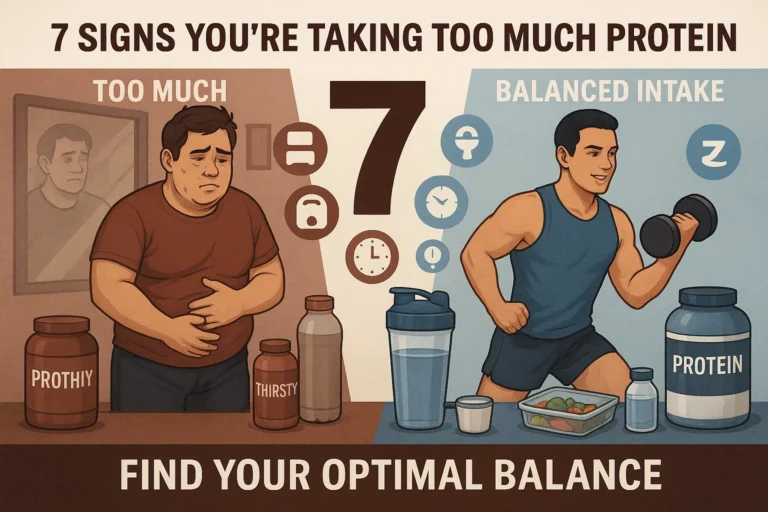
Here’s a shocking statistic: nearly 65% of gym-goers use pre-workout supplements regularly, but only 23% understand the potential risks of daily consumption! The question “can you take pre-workout every day” is one I get asked constantly, and honestly, it’s something I wish I’d researched before diving headfirst into daily supplementation.
I’ll be honest – I used to down pre-workout like it was my morning coffee. Every single day, sometimes twice a day when I had evening workouts too. What I didn’t realize was how my body was slowly building tolerance and how certain ingredients were affecting my sleep, anxiety levels, and overall health.
So can you take pre-workout every day? The short answer is complicated, and that’s exactly what we’re going to unpack in this guide. We’ll dive deep into whether daily pre-workout consumption is safe, what ingredients to watch out for, and how to use these supplements responsibly without compromising your health or workout performance.
Understanding Pre-Workout Ingredients and Their Daily Limits
Let me tell you about the time I thought I was being smart by reading labels. I’d scan the back of my pre-workout container, see “200mg caffeine,” and think I had it all figured out. Boy, was I wrong!
The thing is, most pre-workouts aren’t just caffeine bombs. They’re complex cocktails of stimulants, amino acids, and performance enhancers that can interact in ways you’d never expect. I learned this the hard way when I started getting heart palpitations during my Tuesday morning lifting sessions.
Caffeine is usually the star player, ranging from 150mg to 400mg per serving. To put that in perspective, a cup of coffee has about 95mg. So some pre-workouts pack the punch of four cups of coffee! The FDA says healthy adults can handle up to 400mg of caffeine daily, but here’s the kicker – that’s from ALL sources, not just your pre-workout.
Then there’s beta-alanine, that ingredient that makes your skin tingle. It’s actually pretty safe at 3-5 grams daily, but when you’re taking it every single day, some people develop a tolerance where they need more to feel that “tingly” sensation. I made this mistake and ended up taking way more than necessary.
Taurine is another common one, usually around 1-2 grams per serving. While it’s generally safe, combining it with high doses of caffeine daily can amplify the stimulant effects. L-citrulline and creatine are typically safer for daily use, but artificial sweeteners like sucralose and acesulfame potassium can cause digestive issues when consumed regularly.
Here’s what I wish someone had told me earlier: check for “proprietary blends.” These sneaky label tricks hide exact amounts of ingredients, making it impossible to know if you’re getting safe daily doses. Always opt for products with transparent labeling.
The Real Risks of Taking Pre-Workout Every Day
This is where things get real, and I’m not gonna sugarcoat it. After about six months of daily pre-workout use, I started noticing some pretty concerning changes in my body and mind.
First up: caffeine tolerance. It crept up on me slowly, like gaining weight over the holidays. What started as half a scoop giving me incredible energy turned into needing a full scoop, then one and a half scoops just to feel normal. My natural energy levels tanked on days I didn’t take it. I’d drag myself through workouts feeling like I was moving through molasses.
The sleep thing hit me hardest though. Even when I took pre-workout at 6 AM, I’d still be lying awake at midnight, mind racing. Your body needs 6-8 hours to process caffeine, and I was basically keeping myself in a constant state of mild stimulation. Recovery suffered big time because deep sleep is when your muscles actually grow and repair.
Then there’s the adrenal fatigue aspect. Your adrenal glands produce natural energy hormones like cortisol and adrenaline. When you’re constantly flooding your system with artificial stimulants, these glands can get lazy. It’s like having someone else do your homework – eventually, you forget how to do it yourself.
I also started noticing increased anxiety and irritability. Little things that never bothered me before would set me off. My girlfriend even mentioned I seemed “more on edge” during that period. Turns out, daily stimulant use can mess with your baseline stress response.
The digestive issues were no joke either. All those artificial sweeteners and additives started causing bloating and stomach discomfort. Some days I’d be doubled over in pain an hour after taking my pre-workout, wondering why I kept putting myself through it.
Cardiovascular stress is probably the scariest risk. Your heart rate and blood pressure spike every time you take pre-workout. Doing this daily puts constant strain on your cardiovascular system, especially if you have any underlying heart conditions you might not even know about.
Signs Your Body Needs a Pre-Workout Break
Looking back, my body was screaming for a break way before I finally listened. I was just too stubborn (and probably too addicted) to pay attention to the warning signs.
The most obvious sign was needing more and more to feel the same effects. When I caught myself eyeing a second scoop just to get through a basic chest workout, I knew something was off. Your pre-workout shouldn’t become a crutch for normal training sessions.
Sleep quality is a huge indicator. If you’re taking pre-workout in the morning but still having trouble falling asleep or staying asleep at night, that’s your body telling you the stimulants haven’t fully cleared your system. I was waking up feeling tired even after 8 hours of sleep, which makes zero sense unless your sleep quality is trash.
Physical symptoms started showing up too. I’d get headaches on days I skipped pre-workout, almost like withdrawal symptoms. My hands would shake sometimes, especially if I hadn’t eaten enough before taking it. Some people get heart palpitations or chest tightness – if this happens to you, stop immediately and consider seeing a doctor.
The mental stuff was harder to recognize at first. Increased anxiety, feeling “wired but tired,” or being unusually irritable are all red flags. I remember snapping at my workout partner over something trivial and realizing I’d been on edge for weeks.
Performance plateaus despite supplementation are another sign. If you’re taking pre-workout daily but your lifts aren’t progressing or your endurance isn’t improving, your body might be too overstimulated to actually benefit from the supplements.
Here’s a weird one that caught me off guard: losing appetite or feeling nauseous regularly. Pre-workouts can suppress appetite, and when you’re taking them daily, you might not be eating enough to support your training goals.
Safe Daily Pre-Workout Alternatives
After my wake-up call, I had to find ways to maintain my energy and performance without relying on hardcore stimulants every single day. The good news? There are actually some solid alternatives that won’t leave you feeling like a crashed car by 2 PM.
Lower-stimulant pre-workouts became my best friend. Instead of 300mg+ caffeine bombs, I switched to products with 100-150mg caffeine – basically the equivalent of a strong cup of coffee. Brands like Transparent Labs and PEScience make some great options that give you energy without the jitters.
Natural alternatives surprised me with how effective they could be. A simple cup of green tea with some honey about 30 minutes before working out provides clean energy without the crash. I also started experimenting with yerba mate, which has caffeine but also contains theobromine – it gives you energy that lasts longer and feels more sustained.
Beetroot juice became an unexpected game-changer. I know it sounds weird, but the natural nitrates improve blood flow and can enhance endurance. I’d drink about 8 ounces an hour before training, and while it didn’t give me that “buzzed” feeling, my pumps were incredible and I could push harder for longer.
Creating DIY pre-workout recipes saved me money and gave me control over exactly what I was putting in my body. My go-to became: 200mg caffeine (from coffee or tea), 3g beta-alanine, 6g citrulline malate, and a pinch of pink Himalayan salt mixed in water. Simple, effective, and I knew exactly what I was getting.
Timing became crucial too. Instead of taking pre-workout right before the gym, I’d have my coffee or green tea about 45 minutes before training. This gave me sustained energy throughout my workout without that immediate rush followed by a crash.
Here’s something most people don’t consider: sometimes you don’t need any pre-workout at all. On days when I felt naturally energetic, I’d skip it entirely. This helped prevent tolerance buildup and reminded my body how to generate its own energy for workouts.
How to Cycle Pre-Workout Supplements Properly
Cycling pre-workout was honestly one of the best decisions I made for my long-term training and health. It took some trial and error to find what worked, but once I dialed it in, my workouts became more effective and I felt way better overall.
The weekly approach worked best for me initially. I’d use pre-workout Monday, Wednesday, and Friday, then go natural on Tuesday, Thursday, and weekends. This gave my body regular breaks while still having that extra boost for my hardest training days. On off-days, I’d rely on coffee, green tea, or just pure willpower.
Monthly cycling is probably the gold standard though. I’d use pre-workout for three weeks straight (but not every day – maybe 4-5 times per week), then take a full week completely off. That week off was rough at first, not gonna lie. My workouts felt harder and I questioned whether I was making progress. But by the end of the week, my natural energy started coming back.
Seasonal adjustments make a lot of sense too, especially if you’re like me and train harder during certain times of the year. During my bulking phases in winter, I’d be more liberal with pre-workout use since I was training more frequently and intensely. Come summer cutting season, I’d dial it back and focus more on natural energy sources.
The tapering approach saved me from those brutal withdrawal headaches. Instead of going cold turkey, I’d gradually reduce my dosage over a week. If I was taking a full scoop, I’d do 3/4 scoop for two days, then half scoop for two days, then quarter scoop for two days before stopping completely.
Here’s what I learned about maintaining intensity during off-cycles: your first few workouts might suck, and that’s totally normal. Don’t panic and reach for the pre-workout. Push through those sessions – they’re actually building your mental toughness and reminding your body how to perform without chemical assistance.
Planning your cycles around your training program helps too. I’d time my off-weeks with deload weeks or when I was focusing on technique work rather than max intensity sessions. This made the transition smoother and less mentally challenging.
Who Should Avoid Daily Pre-Workout Use
Let me be crystal clear about this – some people should approach daily pre-workout use with extreme caution or avoid it altogether. I learned this lesson when my buddy ended up in the ER after taking pre-workout with an underlying heart condition he didn’t know about.
If you have any cardiovascular issues, even minor ones, daily stimulants are playing with fire. High blood pressure, irregular heartbeat, or a family history of heart problems should make you think twice. I’m not a doctor, but I’ve seen enough gym horror stories to know this stuff is serious.
Age matters more than most people realize. If you’re over 40, your body processes stimulants differently than it did in your twenties. Your cardiovascular system might not handle daily stress as well, and recovery becomes even more critical. I’ve watched older lifters who swear by cycling their pre-workout use and seem to have way more sustainable energy patterns.
Pregnancy and breastfeeding are obvious no-gos for daily pre-workout use. The high caffeine content alone exceeds safe recommendations, not to mention all the other ingredients that haven’t been tested for safety during pregnancy. One scoop of most pre-workouts contains more caffeine than doctors recommend for an entire day during pregnancy.
Medication interactions can be dangerous territory. If you’re on any blood pressure medications, antidepressants, or anxiety medications, daily pre-workout could cause serious problems. Blood thinners and stimulants don’t mix well either. Always check with your doctor if you’re on any regular medications.
Sleep disorders and anxiety conditions make daily pre-workout use particularly risky. If you already struggle with sleep or have anxiety issues, adding daily stimulants to the mix is like pouring gasoline on a fire. I’ve seen people develop panic attacks after months of daily pre-workout use.
Athletes subject to drug testing need to be extra careful. While most pre-workouts don’t contain banned substances, some ingredients might show up on tests or interact with other supplements in unexpected ways. The last thing you want is to fail a drug test because of your pre-workout routine.
Students and people in high-stress jobs should also consider their total stimulant intake. If you’re already drinking multiple coffees or energy drinks throughout the day, adding daily pre-workout might push you over safe limits.
Conclusion
The bottom line? While some people can handle daily pre-workout use, it’s not the best approach for most of us. Your body thrives on variety and recovery, not constant stimulation.
Remember, the goal isn’t to depend on supplements for energy – it’s to enhance your natural performance. Start by assessing your current usage honestly, listen to your body’s signals, and don’t be afraid to take breaks when needed.
Try implementing a cycling approach first, and pay attention to how your sleep, anxiety levels, and overall well-being improve during off-days. Your future self (and your wallet) will thank you!
Have you noticed any of these warning signs with your pre-workout use? Share your experiences in the comments below – I’d love to hear how you’ve found balance with these powerful supplements.



